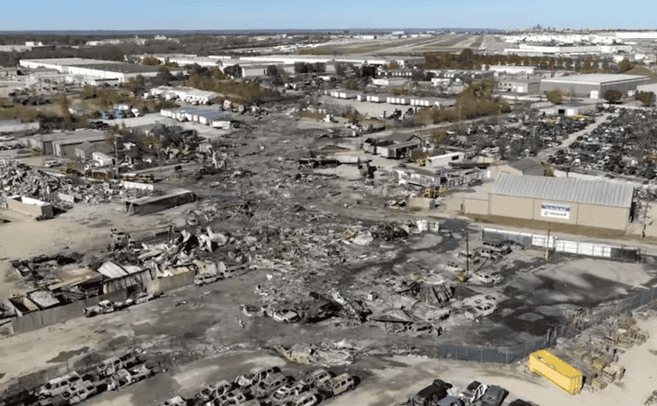7 Nov 2025 | 1300 ET: This article has been updated to include the latest verified information.
The death toll in Tuesday’s crash of UPS Flight 2976 has risen to 13, with nine people still missing, according to Louisville Mayor Craig Greenberg. One of the injured victims hospitalized earlier in the week has since died.
For the first 48 hours after the crash, the site had to remain largely untouched as NTSB investigators documented evidence and mapped debris patterns. As of Friday morning, investigators have begun a more detailed search through the wreckage for additional clues and potential victims.
Crew Members Identified

On Thursday, 6 November, UPS Executive Vice President Nando Cesarone identified the three crew members aboard the ill-fated flight:
- Captain Richard Wartenberg, Independence, Kentucky
- First Officer Lee Truitt, Albuquerque, New Mexico
- International Relief Officer Captain Dana Diamond, Caldwell, Texas
In a statement, Cesarone said:
Words can’t express the sorrow we feel over the heartbreaking Flight 2976 accident. It’s with great sorrow that we share the names of the UPS pilots on board UPS Flight 2976.
Statement by UPS Executive Vice President Nando Cesarone
Captain Richard Wartenberg, First Officer Lee Truitt, and International Relief Officer Captain Dana Diamond were operating the flight. Our hearts go out to every UPSer who has been impacted and all in our Louisville community – supporting you and ensuring you receive the care and resources you need is our priority.
This continues to be an incredibly sad time for our entire UPS family, and as our CEO, Carol Tomé reminded us: ‘United, we are strong.’ We extend our deepest sympathies to the family and friends of our colleagues, and to the loved ones of those in the Louisville community.
Accident Overview

The aircraft, a 34-year-old McDonnell Douglas MD-11F (registration N259UP), was bound for Daniel K. Inouye International Airport (HNL) in Honolulu when it crashed shortly after takeoff from Runway 17R at Louisville Muhammad Ali International Airport (SDF) on 4 November 2025.
Flight 2976 began its taxi at approximately 1710 local time, with takeoff recorded at 1713. Within seconds, witnesses reported a fire under the left wing.
NTSB investigators have confirmed that the aircraft suffered a left engine separation during takeoff. The MD-11 is powered by three General Electric CF6-80C2D1F engines.
SEQUENCE OF EVENTS
Dashcam and CCTV footage around the airport captured the moment the aircraft took off without its number one (left) engine, which detached during the takeoff roll as the left wing burned intensely. Unable to abort after reaching V1 speed, the crew continued the takeoff.
The aircraft lifted off briefly, veering left of the runway centerline before banking further and entering a descending left turn. It struck a UPS Supply Chain warehouse south of the airfield, carving a 300-foot gash through the structure.

The left wing then struck a cluster of fuel tanks at the Kentucky Petroleum Recycling Company, triggering a massive explosion and fireball visible across Louisville. The MD-11 rolled inverted before crashing through an auto scrap yard, a truck parking lot, and an auto parts store, leaving a half-mile-long trail of destruction.
The number one engine was later found lying on the grass beside Runway 17R.
VIEWER DISCRETION ADVISED FOR THE FOLLOWING VIDEOS:
ONGOING INVESTIGATION

A 28-member NTSB Go-Team remains in Louisville conducting the investigation. Lead investigator Todd Inman confirmed that the black box data has been successfully downloaded, calling it a “good extraction.”
According to the NTSB, the final ADS-B transmission was received at 17:13:32, showing the aircraft reached a maximum altitude of 475 feet and a speed of 183 knots (211 mph).
A major focus of the investigation is now on the maintenance history of the aircraft. Records show the jet underwent six weeks of maintenance work in San Antonio, Texas, between September 3 and October 18.
According to FAA documentation dated 18 September, maintenance crews found a crack and corrosion inside the center wing fuel tank that required repair. After returning to service, N259UP flew numerous cargo routes without reported issues. The NTSB confirmed that no maintenance work was performed on the day of the crash, despite early reports suggesting otherwise.
A drone video released by the NTSB shows the debris field and damage pattern across the crash site:
